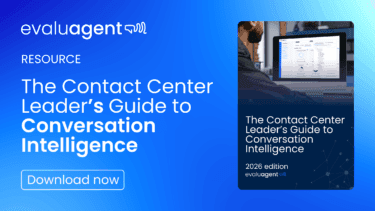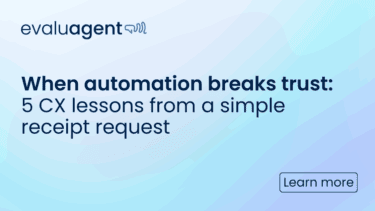Last Thursday, CEO Jaime enjoyed discussing all things employee engagement-related at CRM XChange’s Techniques for Training, Coaching, and Employee Engagement Conference.
Running for four days, attendees were treated to a variety of viewpoints on the subject, with particular focus on remote working, and how that could affect existing employee coaching practices.
As major employee engagement and improvement advocates ourselves, we couldn’t wait to share ideas, tips and practices with other organisations. Leading an interactive webcast and Q&A, we were able to discuss how businesses across the world had reacted to the pandemic, and how they felt they needed to adapt their feedback, coaching and QA processes as a result.
Here are a few of our main takeaways from the event.
1. More Contact Centres Than Anticipated Are Staying Remote
Let’s be honest, at the start of the pandemic many of us thought that mass remote working was going to be a short-term solution to a temporary lockdown.
As COVID-19 has progressed, however, and as organisations weathered their original confusion around remote working,
Contact centres are no exception. Many of our audience members suggested they were looking at hybrid models of work, and in some cases planned to do away with the physical location of their contact centre entirely. Completely remote contact centres are definitely on the agenda.
The benefits of doing so include a better work/life balance for agents and major cost savings for the business – but many people we asked feared they would be hindered by legacy systems and lack of connectivity.
This means that we’re seeing renewed investment in software that will enable them to connect insight with action, so that they can deliver one-to-one coaching and feedback wherever their team is based.
2. Remote Contact Centres Make Agent Coaching More Important Than Ever
Whilst remote working is much more difficult to deliver remotely, it’s also more essential than ever to create and maintain standout customer experiences that will drive profits.
Without being able to deliver effective coaching, and without being able to reward good performance at the same time, employee engagement suffers. This leads to dips in both individual and contact centre performance, as well as a high attrition rate that costs a lot whilst reducing productivity drastically.
Our advice here is always to go back to basics. We mentioned investing in the right software and moving off unhelpful legacy systems above – these will enable you to:
- Gather customer feedback and QA data in real-time for coaching activities
- Schedule one-on-ones with your agents
- Construct leaderboards for different metrics (for example top performers, or most improved).
- Allow your agents to access previous coaching, feedback and performance goals
None of this will matter if your team leaders don’t make time to deliver meaningful coaching, or provide space for agents to take it on board.
Give your remote teams the space and support to provide and benefit from coaching, even if this means reducing expectations elsewhere in the short term. In the long run, the benefits will pay off.
Another good tactic is to recognise great performance over as many virtual channels as possible. Praising agents who have done well on Teams, Slack and other internal communications channels is a great way to both increase employee engagement and provide good examples for everyone else to follow.
Some of our audience members shared some great strategies for virtual recognition too – for example, using services like Amazon, Deliveroo and many others to allow agents to pick from a gift-list of items when they top leaderboards.
3. Consistency Is Key
Our audience discussed the issue of consistency across remote or hybrid working models at length. Coaching-wise, we touched on:
- Standards used for defining performance – if an interaction is marked as ‘good’ in one team but ‘adequate’ in another, you can embed inconsistencies into your organisation, and agents may start to feel unfairly treated.
- Frequency of one-to-ones – are your agents getting regular feedback and coaching sessions which are genuinely useful, or are some managers more committed than others to agent improvement?
- Quality of one-to-ones – are all your agents being coached in a way that offers ambitious but achievable goals going forward, with recognition for good performance too?
If you want to embed a standout CX across your organisation, consistency across these areas is essential. Otherwise, a poor CX in one area will lose you the customers you gain via a great CX in another. Customer loyalty decreases, customer lifetime value drops and you may also suffer from reputational damage as a result.
One way to embed consistency across your organisation is to implement a particular coaching model across all teams. There are a number of these available (Jaime mentioned GROW as a particularly effective option); find one which works for your organisation and use it to work towards a great CX organisation-wide.
Creating pre-built one-on-one and coaching forms ensures everyone is having the right type of conversations and helps managers focus on delivering useful feedback and coaching, without having to worry about structuring conversations themselves.




